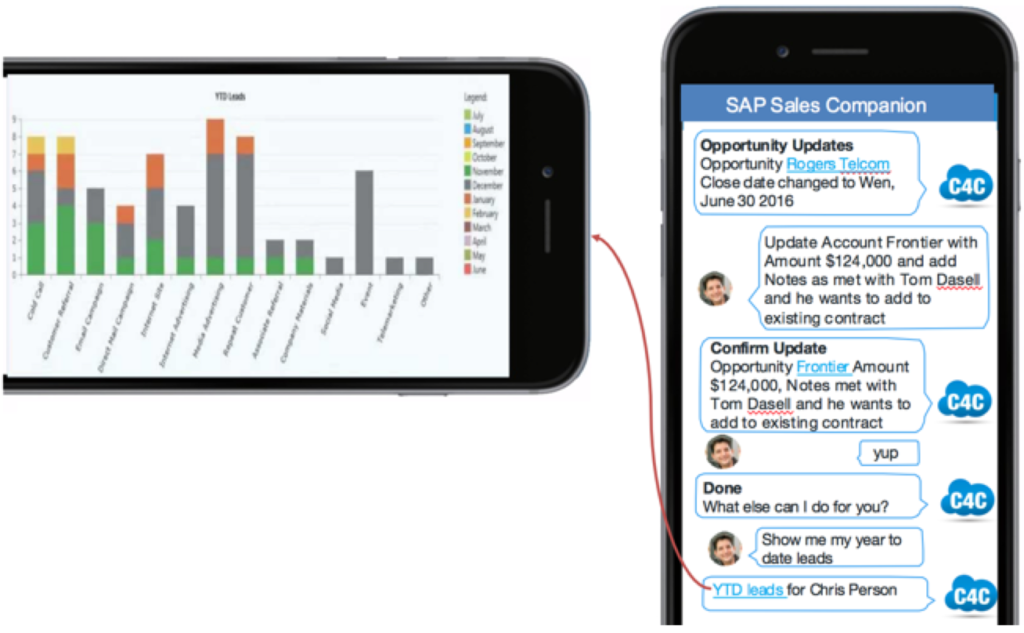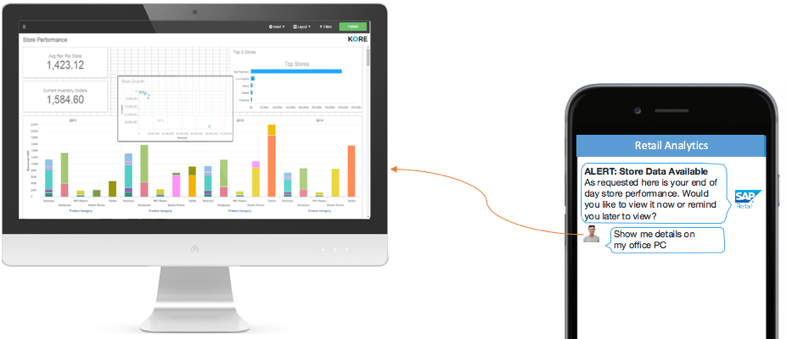The Data Analytics Business Advantage
Data is often the lifeblood for many businesses. They compete based on the business intelligence they extract from their vast troves of data. These insights enable them to invest in the right growth strategies, navigate to address new business opportunities, and pinpoint the most effective talent recruitment and management models. They also provide them with intimate knowledge about their customers that they leverage to craft programs—from retention, to loyalty, to cross-selling, to advocacy—that generate optimal results.
For companies that use data-driven analytics, the results are impressive. Their productivity and profitability rates are five to six percent higher than their peers that fail to do so. According to a study by McKinsey, companies see a six percent increase in profits in the first year when using data-driven analytics, which grows to nine percent after five years.
The Challenge of Data Analytics
Most certainly, there’s a lot of data out there. Data doubles in size every two years and will reach 44 zettabytes by 2020. How much is this in tangible terms that we understand? Think of mobile tablets stacked on top of each other, and then go from the earth to the moon 6.6 times!
Companies of all shapes and sizes collect data on their operations, partners, and customers—from marketing campaigns, to website traffic and activity, to operations. Yet, despite all of the discussion around big data and its transformational possibilities, only 12 percent of it is being analyzed for actionable intelligence today.
Also Read: Powerful Bot Analytics Lead To Intelligent Chatbots |
The immensity of the data is one of the reasons much goes unused. It’s also very difficult to correlate data across your organization, which typically is locked in segregated silos. Another reason is that few companies can afford the tools needed to analyze the data and provide predictive insights. And even if you do have the right tools, the expertise required to manage the data is held by only a select few.
For most professionals, the reality is that you don’t have an answer when your boss asks you if there is a correlation between two business indicators and if something is a trend or simply a random occurrence. Without data-driven analytics, it’s impossible to gain these types of insights and provide actionable recommendations. In all-too-many instances, you rely on gut instinct and best guesses. And if you do utilize business intelligence (BI), the process is anything but simple and fast, consisting of 1) downloading data, 2) selecting the data you need and generating a report in your reporting tool, 3) importing that data set into your BI tool to run analysis, and 4) based on the insights, readjusted your data selection and going back through the entire process again.
Bots Speak Data Analytics
Bots break down the walls between humans and big data. Human-to-machine (H2M) leverages Natural Language Processing (NLP) that makes data-driven analytics, something only accessible to data scientists and BI experts who know how to use complex toolsets, available to every professional. Bots translate user questions and problems into “machine speak” and then interpret the analysis into actionable insights in “human speak.” They also know where to go to find the data needed to answer a question or solve a problem and moreover if multiple data repositories are required. And once the requisite data is in hand, bots identify what BI toolsets are needed to organize the data and produce predictive and prescriptive business insights.
Bots also have the advantage over traditional BI models where data analysis is often a highly iterative, time-consuming process. Specifically, contrary to the widely held belief that data scientists and BI experts can point machine learning software at a question or problem and generate immediate answers, the fact of the matter is that there are always outliers, edge cases, and errors that require further data cleaning and additional reporting and queries. While this isn’t obviated with bots, the entire process becomes much easier and H2M interaction is done in the language of the user versus the technical speak of the particular BI tool in use that is only accessible to a few domain experts.
Some Practical Industry Use Cases
There is various industry use cases and ways in which bots transform data analytics and insights. Let’s consider the following.
Aerospace Manufacturing
Internet of Things (IoT) is one of the fastest growing segments of data, projected to comprise 10 percent of all data generated by 2020. The Pratt & Whitney Geared Turbo Fan engine is fitted with 5,000 sensors that generate up to 10 GB of data per second. These IoT connections are immensely more than the standard turbo fan engine that contains around 250. Why is Pratt & Whitney making such a dramatic leap? It’s able to reduce fuel consumption by 10 to 15 percent while improving engine performance and reducing engine noise and emissions. All of this translates into a huge competitive advantage for Pratt & Whitney, not to mention the benefits to the company’s customers.
Also Read: Analytics in Conversational AI |
What does this mean in terms of data? In the case of the Pratt & Whitney engine, a single twin-engine aircraft with an average 12-hour flight time would produce upwards of 844 TB of data. This is more than what Facebook accumulated per day in data in 2014, estimated at 600 TB! Multiply the scenario involving Pratt & Whitney across an order book of more than 7,000 engines, and the amount of data downloaded daily soars into zeta bytes. This doesn’t even account for all of the other components on an airplane that could be IoT enabled! Enabling users to access to all of this data, correlate it across all of your data sets, and then pinpoint actionable insights becomes a herculean task. But with bots serving as the interpretive interface, it becomes quite doable.
Hospitality
As Amazon is to the retail sector, Airbnb is to the hospitality space, and big data is playing a pivotal role in the transformation. The hospitality innovator has about 1.5 petabytes of data today. This data and the BI generated form it is used to power the heart of the company’s business. Until recently, it was only accessible by its data scientists and data analysts. However, wanting to make it available to all employees, not just data scientists and data analysts, Airbnb built a data analytics platform called Airpal to provide employees access to the data and the tools needed to query it.
While we applaud this innovation and initiative, such isn’t possible for many hospitality companies, which simply don’t have the same technological resources and capital as Airbnb. Bots offer a faster, easier, and immensely less costly entry point. Additionally, even though Airpal is described as having a user-friendly interface, it still requires H2M language interaction and translation.
Businesses Enter New Conversations with Bots
Bots offer a big data option that amplifies the discussion, facilitating conversations between your systems and data silos and allowing your decision makers to converse with them using their own language. Suddenly, the conversation expands from just those steeped in the science of big data to anyone who wants to enter into the exchange.
Bots enable the simple power of chat to view analytical data, making it viewable on a small screen. This quick and easy view is ideal for displaying key performance indicators (KPI’s) and alerts on the run with simple charts and graphs.
At Kore.ai we understand the importance of enabling enterprise-grade bots with NLP that allows data captured by mobile devices to be integrated on the fly so that reports are current and mobile workers can make informed decisions in real time.
Also Read: Analytics in Conversational AI |
Business intelligence can instantly improve its standing and value by adding alerts and report delivery via a bot. Notifications are useful for leaders to keep a pulse on business operations without having to log into the BI system (especially when they’re travelling). For instance, if inventory falls below a set threshold, managers would appreciate an instant alert of this change. If a manager is on a business trip and needs to keep up with important KPIs, reports and dashboards can be emailed on a set schedule and a bot can notify them when the data is available.
The examples below are just a few powerful use cases demonstrating bots for BI.


Kore.ai was founded on the principle that conversation is the lynchpin to business. In the case of data-driven analytics, it empowers all decision makers with the insights they need to drive tangible business outcomes. Kore.ai isn’t the system of record or the BI tool that generates predictive and prescriptive insights; it rather brings all of these into conversation with each other as well as with all of your decision makers.
Learn more about why the world’s largest enterprises are turning to chatbots to propel their digital strategies by watching our webinar, Entering the Conversational Era: The Why, What, and How of Bringing Dialog to Your Digital Strategy with Chatbots.
|
Enrich productivity and profitability with data-driven analytics and insights {{cta(‘284b444d-4361-4e0b-9d3a-1cfcb0e834f7′,’justifycenter’)}} |
Build virtual assistants for every industry & function {{cta(‘540e17e4-fd5c-46bb-af7d-e212574e724d’,’justifycenter’)}} |







